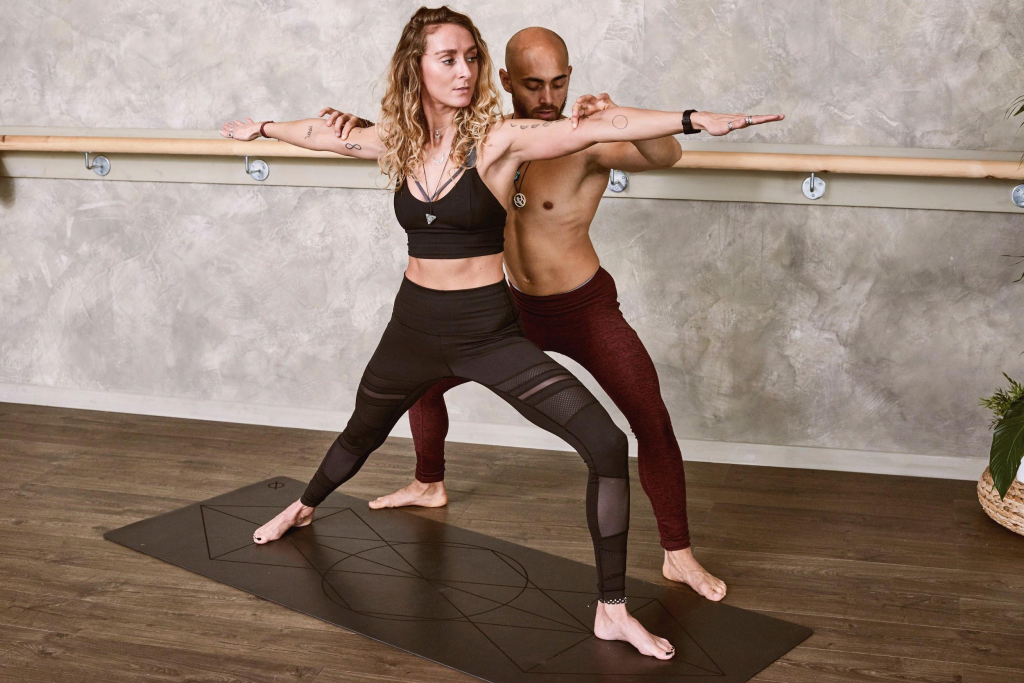
In yoga, standard cues are a relevant guide to learning new poses, and it’s easier for teachers to learn to guide a large group of students with these standards. At the same time, students in yoga are not all standard and are in classes for a variety of reasons. Since there isn’t an “average” student, the cues can only act as approximations. While some students are in class to optimize their health, others are there to master the posture. Understanding the importance of alignment cues to yoga, and how yoga can help beyond these cues will improve your teaching and understanding of all your students and their needs. Use the following tips to take your yoga instruction beyond alignment cues to an even deeper instruction that will benefit your students as well.
#1: Not every pose is for every student
Just as every pose is unique, so is every teacher and student. While a teacher may master a pose, it does not always guarantee a student practicing under her will master it. Every student’s life is different, including nutrition, biology, body type, past injuries, and other unique factors. Some postures may be more difficult for each student.
#2: Function or Aesthetics
Realizing that every student is different is important because each individual will have his or her own goals for yoga. Is the focus on practice functional? If so, teachers will help generate sensation since the student is not concerned with how they look as much as practicing optimal health. Yoga students focused on aesthetics are concerned with how well they look in the pose or how well they are doing the traditional pose; in this case, a teacher’s alignment cues should be based on the traditional pose.
#3: Poses as choreography
Each pose needs a purpose. For functional poses, teachers want students to create stress, tension or compression. Whether your goal as a teacher is compression or tension will determine the pose you choose. As an instructor, it’s important to come to class with an intention, rather than a predetermined set of poses. Each make-up of students in your classes will help with this determination as well.
#4: How does the pose make you feel?
As an instructor, variations of poses are not only common but necessary. It’s important for teachers to explain the intention of each pose and how the pose should make the student feel. Doing so will help the student monitor her body, understanding if the position is working and if she should modify in some way to make it work for her. This practice teaches self-awareness, since each student will need to recognize her own alignment cues.
#5: Pain is a bad sign
If the answer to “how does the pose make you feel” is pain, something is wrong. It’s important for instructors to guide students through poses, allowing for variations because some poses will be uncomfortable or painful for some but not others. Practicing self-awareness lets students reflect on what they were doing and how they can practice in a different way to prevent pain or injury.
Preventing pain and injury benefits both you and your students. Of course, you never want to see a student injured, but if that injury happens under your watch, you could be liable for the damages. If you haven’t already, be sure to get yoga instructor liability insurance.
Find a company that specializes in yoga instructor insurance like beYogi. They have all the information you’ll need and you can even compare rates right from their site. If you follow these tips, injuries will rarely happen, but that doesn’t mean you shouldn’t be prepared in case they do.
Alignment cues are an important foundation for yoga, but they are by no means the end-all. Instructors and students of yoga can benefit from yoga beyond the foundational instructions. Teachers can guide students through self-awareness, so students are more conscious of each pose and how it impacts their bodies.


